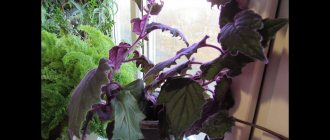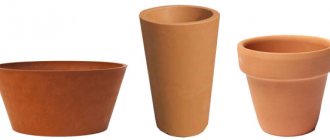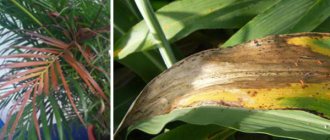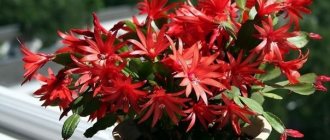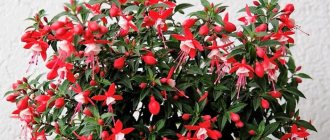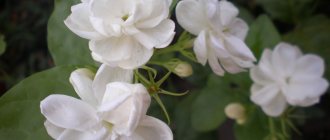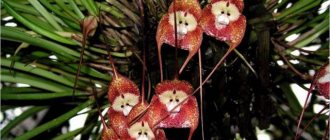Popular signs and superstitions about Guzmania
A beautiful and succulent plant with bright flowers attracts gardeners with its appearance, but this is not the only reason why it is popular.
Guzmania Hole
Here are just a few well-known signs and superstitions that tell about the plant, and whether to believe in them or not is everyone’s business.
In the world of flora, guzmania is called a male flower for a reason. They say that it is able to charge with energy, give activity, and even activate the love power of the stronger sex.
It is believed that guzmania can help cope with depression, gives strength, and charges the inhabitants of the home with positive emotions.
Donell-Smith's Guzmania
Some compare Guzmania to Crassula, called the “money tree”. They say that the better it blooms, the more money the household will have.
In addition to positive signs and beliefs, there are those that do not talk about the benefits of the flower:
- can attract uninvited guests;
- in stingy and evil people, the plant, as a rule, does not take root or does not bloom to its full potential;
- during its flowering, it can cause a deterioration in the condition of people prone to allergies and asthmatic symptoms.
In rooms with poor energy, it can have a negative impact on residents.
Guzmania - what it brings to the house
Most gardeners are convinced that the benefits of such a tropical plant are great. But there are also skeptics who unearth not very good features in the flower’s actions. Fortunately, there are not many of them. So what does the guzmania flower bring into the home?
Benefits of the flower:
- Purifies the air and disinfects. The elements that gusmania releases during flowering have bactericidal qualities, those that free the surrounding area from microbes, including pathogens.
- It provides artistic pleasure, although guzmania blooms only once in its life, but throughout the fall and until spring.
- Gives harmony in the family, creates a positive aura at home.
- Activates male power.
- Develops creativity and gives inspiration to household members.
- Attracts monetary wealth.
Harm to the flower:
- According to legends, in greedy and evil people the beneficial qualities of the flower are not fully effective or are completely lost. It happens that all the negative traits of the owners increase doubly.
- According to signs, Guzman has the ability to attract uninvited guests to the house.
- If the aura of the home is not to the plant’s liking, guzmania has the ability to influence household members so that they think about moving or decide to rearrange the interior by changing the interior.
- Allergy sufferers may experience exacerbations, malaise and drowsiness during gusmania flowering.
Guzmania flowering
If, having received a baby from Guzmania, you hope that in a couple of months it will bloom, then you are mistaken. She produces the first and only flower stalk in her life after 3-4 years of growth. It blooms for up to six months, and after flowering, under favorable conditions, offspring appear.
But it happens that guzmania does not bloom. What is the reason? The answer is simple - she is not comfortable. Most often, the plant lacks air humidity. A simple spray bottle will help here - spray your pet more often. Check the lighting mode - partial shade, diffused light and no direct rays of the sun.
Although bromeliads are undemanding when it comes to nutrition, you shouldn’t completely forget about fertilizing - moderate foliar fertilizer will help you get the long-awaited peduncle.
An apple secretes substances that can awaken a sleeping flower bud. It is not known for certain how it works with Guzmania, but this trick did not work with its relative Tilandsia.
If guzmania has already bloomed, then with a bright plume of peduncle it will enrich your home with unusual beauty
During this period, it must be sprayed very carefully, trying not to drip onto the bracts, so as not to shorten the flowering period
Reproduction
Such a beautiful and spectacular flower as guzmania is sometimes bred for reproduction, then gardeners grow it for a long time and wait for the babies to appear. The shoots that form at the root after the end of the flowering period are separated from the mother part and transplanted into separate pots. To determine the time and not do it too early, you should wait until the shoots reach 15 cm in height and the mother part begins to die.
If it is necessary to preserve the main flower, you can separate the growths from the roots when the daughter roots have grown more than 2 cm. To separate, you will need sharp scissors, previously disinfected. Treat the pruning areas with garden varnish. The resulting seedlings are transplanted into small containers - mini greenhouses. After rooting, they will become young plants, but will begin to bloom only after a few years.
Guzmania can also be propagated from seeds. To do this, you should purchase seeds and follow these instructions:
- Prepare the soil - peat mixed with sand.
- Treat the seeds with a weak solution of potassium permanganate, dry and scatter on the surface of the earth.
- Without filling it with soil, water the seeds and cover the container with film, setting up a greenhouse.
- External temperature not lower than 23 degrees.
- Periodically remove the film, spray the emerging shoots with water and ventilate.
- After a couple of months, the seedlings will take root and grow greenery; they should be transplanted into a mixture of peat, humus and greenhouse soil.
After six months, the grown bushes are ready to be transplanted into separate containers.
Bromeliad seeds are sold only in special nurseries. And they appear inside the ears after the flowering period ends. Some varieties produce spikelet flowers that do not open, however, self-pollination occurs inside and the formation of fruits with seeds occurs. It will not be possible to collect seeds for seedlings on your own, as this requires special knowledge and botanical training.
Nurseries also often sell 1-2 year old shoots. Different varieties have different prices, some rare and valuable ones are expensive. It is better to buy a flower before it begins to bloom, since long flowering (about 17 months) occurs only once in its life, after which it produces children and dies. If there are no buds, then the gusmania is not yet ripe and it needs time during which the gardener will feed it and create all the proper conditions.
Home care
Houseplants, like little children, require special treatment and careful care. According to its characteristics, guzmania does not belong to the list of fastidious plants, but still requires some attention.
In the wild, Guzmania grows in shady areas. Specimens adapted to the home environment also do not tolerate the scorching sun. Therefore, the plant must be placed in the eastern and western parts of the apartment. Undoubtedly, Guzmania requires sunlight, but it must be diffused. When bright rays hit the leaves, burns occur, causing the plants to lose their attractive appearance. The north side will also not bring anything good.
In summer, the flower can be placed in the open air if you choose a corner for it that is protected from weather factors. During low solar activity there is no need to protect the flower from scorching sun rays. If it is not possible to take the flower outside, you will need to place it in a ventilated room.
There is no specific period of calm in Guzmania. Flower growers have noticed that on average, the rest period of a flower fluctuates with the onset of cold weather, namely from October to February. While the plant is resting, watering should be kept to a minimum, do not spray the leaves, or feed the soil. In this case, the maximum air temperature in the room should be approximately 20 degrees. In connection with the plant's rest, the lighting should not be reduced; on the contrary, you can supplement it with a phytolamp, but do not forget to turn it off - the length of daylight hours should not be more than 9 hours a day.
This tropical epiphyte does not like hot weather or cold. The most comfortable temperature for the ideal condition of the flower is a maximum of 25 degrees in summer, and 22 degrees during cold weather. A drop in temperature below normal can lead to a lack of flowering, and in some cases the flower will be subject to fungal attack.
The humidity of the room where the flower is located should vary between 60-80%. To maintain the required level of humidity, the air space must be sprayed with settling water several times a day. During dry periods, you will need to place a container of clean water near the flower. The evaporated moisture will enter the air space, and the plant will absorb the evaporation due to the absorption function of the sheets. In some cases, it is allowed to wipe the sheet plates with a damp cloth.
In summer, it is customary to water plants once a day before the peak of solar activity. Guzmania prefers daily watering of the soil composition in the morning or every other day by pouring settling liquid into the outlet. With the onset of cold weather, watering is reduced to once a week and exclusively in the pot. If you do not comply with these requirements and moisten the plant much more often, it may get sick and soon die.
Various types of fertilizing help to properly care for the plant, especially during the growing season. In the wild, guzmania independently obtains minerals and substances, and at home, fertilizing must be carried out by a grower. Mixtures made for the bromeliad family are considered valuable fertilizers for guzmania. In their absence, universal preparations will do, only the concentration for feeding should be reduced by 3 times.
It is enough to feed Guzmania once every three weeks. The diluted mixture should have a liquid consistency. And they pour it directly into the outlet. When watering the soil, you can harm the fragile root system.
Planting and growing
This plant is tropical and therefore requires high humidity and warmth all year round. Such conditions cannot be provided in open ground in Russia, so the plant is grown in well-heated winter gardens and on house windowsills. Flowering occurs in spring and the first half of summer; at this time it is necessary to provide the flower with moist, warm weather and no gusts of wind.
In its natural habitat - in the Amazon forests, in the southern states of the USA, Brazil and Venezuela, this species grows as an epiphyte - that is, it holds onto another plant with its roots and feeds on dead cells of its bark and other nutrients. To grow in a pot, you need to choose the right soil. It should be a mixture of coniferous bark, moss, peat, humus and compost. Store-bought substrate is good for orchids or palm trees.
Be sure to adhere to the following requirements when landing:
- After purchase, it is better not to replant or remove from the pot for the first month (exception if it is a small shipping glass);
- place a good layer of drainage in the container - expanded clay, fine gravel;
- you can mix one part of peat, bark (can be replaced with leaf humus) and half a part of sand or perlite;
- the height of the container should be no more and no less than a third of the height of the entire plant from roots to tip, the diameter is small, flowering will be problematic in containers that are too spacious;
- it is better to choose a pot that is squat and heavy so that the flower does not spill over at its height;
- place it on the west window.
It is the bracts that look exotic in Guzmania, and the flowers themselves are hidden inside the rosette and are not noticeable. The bract-spike blooms for several months, after which it dies, at which time daughter shoots are formed, which are used for seedlings. Some species, like Donatella Smith, unicolumna or mosaic, bloom with spikes of flowers that do not look like leaves.
To grow epiphyte gusmania, you need to find a picturesque piece of driftwood and attach the seedlings to it. To do this, the roots are carefully wrapped in moss and secured to the bark with wire, being careful not to damage the root system. At the same time, we should not forget about regular watering directly into the flower outlet.
Problems encountered when growing Guzmania
With improper care and unfavorable conditions, a number of problems can arise:
- the root system is affected by rot - excess water in the pot;
- infection by fungal diseases - the bush is kept in an excessively warm room;
- the leaf blades are covered with brown spots - the result of sunburn;
- the tips of the leaves begin to turn brown - dry air in the room or watering was carried out with hard water, there is not enough water in the outlet;
- yellow spots began to appear on the leaves, and then the leaf plates began to turn yellow and dry out - a sign that a spider mite had settled on the plant;
- brown plaques with tubercles appeared on the leaves - a symptom of the action of the bromeliad scale insect;
- the leaf plates are covered with white fluff in the form of cotton wool - the plant is affected by a mealybug;
- the plant does not form daughter shoots - lack of nutrients;
- the leaves have become drooping and soft - low air temperature in the room.
Transfer
To achieve flowering, you should know how to plant Guzmania. Flower growers sell varieties in a transport substrate. But in order for the plant to take root and grow well, upon arrival home it should be replanted in soil containing nutrients.
Fuchsia ampelous - growing and care at home
They use the transfer method, during which the plants are completely taken out, shaken off the ground, and installed in a pot. The neck must be completely intact; the slightest damage to it causes the death of the entire plant.
Replanting is done when soil drainage is disrupted, during which souring of the roots has occurred. Also, replanting is necessary if the roots do not fit into the pot.
Important! When the plant has flowered, there is no need to replant, it dies. Transplantation by daughter children is possible.
Reproduction methods
The only way to prolong the life of the represented species of epiphytes is reproduction. When working and studying Guzmania, botanists identified only two ways to increase the population:
- dividing the bush;
- drop off of children.
Both processes are identical in general principle. As soon as the bush fades, it develops lateral growths, later called children. After some time, the parent rosette dies, and young embryos appear next to it, which gradually form an individual root system.
The baby is separated from the mother bush with a sharp, sterilized knife. The cut area on the bush and the separated shoot must be treated with garden varnish. The process of root formation in children occurs at different rates. That is why it is not possible to transplant all embryos at the same time. Each individual shoot is transplanted into an individual container filled with pre-prepared soil mixture. Then the transplanted baby is placed in a warm place. At first, the transplanted shoot should be covered with a polyethylene cap that can create the required air humidity. When the bushes grow and become stronger, they can be replanted using the transshipment method discussed earlier.
Guzmania is propagated using seeds not only by breeders, but also by fans of home mini-gardens. The container prepared for sowing is filled with a substrate developed and manufactured for representatives of the bromeliad family. It contains sand and crushed peat. The seeds are pre-washed in a solution of potassium permanganate, then dried well and evenly laid out on top of the prepared soil mixture.
The seeds should not be pressed down, as they need constant access to light. After sowing, the container is covered with film or glass and placed in a warm room, the temperature in which fluctuates within 24 degrees.
The first shoots will begin to appear after 3 weeks. Picking should be done when the seedlings are 10 weeks old. Then, after half a month, the grown bushes are transplanted to their permanent place of residence. Guzmania grown by sowing seeds can flower in about 5 years.
Reproduction of Guzmania
Growing a flower involves several ways to produce offspring:
- by dividing an adult bush;
- from seeds;
- when dropping off children.
Shoots gradually appear in the axils of the leaves. When they reach a height of several centimeters, you need to move away the surrounding tissues to expose the “baby”. The shoot is severed with a sharp knife. The place where the separation occurred is treated with garden varnish. The sprout can be placed in a glass of warm water in which activated carbon is dissolved. After 5-7 days it takes root. When several of them appear, you can root the shoot into the ground.
As the daughter grows, it acquires an individual root system. When the length of each process reaches 2 cm, they can be separated.
The shoots need to be transplanted into a substrate consisting of a mixture of sand, pine bark and leaf soil. It requires high temperature (26-28°C) and a cap that shades the space.
Transplanting a sprout is a more popular method of propagation than seeds. The second method is a long and labor-intensive process. It involves rooting in soil consisting of a mixture of peat and sand. On the eve of planting, the seeds are soaked in a weak solution of potassium permanganate. Then they are dried and laid out on the soil without pressing down. Thanks to this, the seeds can constantly receive sunlight.
Germination requires a temperature of 22-24°C, spraying and ventilation. At least 20 days must pass before the sprout appears. The shoots require pruning after 2 months; they need to be planted after six months.
Important! This bush begins to produce flowers after 5 years.
Guzmania mix: description of the plant, characteristics of varieties
Guzmania is an epiphytic evergreen perennial that in some cases can behave as an annual plant, meaning it blooms for only one season. Although the plant comes from the tropical forests of South America, it has taken root well at home.
In indoor conditions, the leaves of the plant can reach 0.5-0.7 m. They have a smooth structure, are quite wide, and have a straight shape. When gathered together, the leaves of the plant form a bromeliad rosette, ending in luxurious flowers.
An adult plant can reach a height of about 0.7-0.75 m, the diameter of the crown is almost the same as the height of the crop. At home, unfortunately, guzmania is not able to reach this size: its height does not exceed 0.35-0.4 m.
The flowering of the plant begins with the arrival of spring and ends by mid-autumn. At the same time, the flowers themselves look rather modest, but the inflorescences are distinguished by an incredibly exotic bright appearance: the rosette has a yellow-orange color and reaches a length of about 5 cm.
About 130 varieties and varieties of Guzmania grow in natural conditions, but only a few of them take root well in indoor conditions:
Mosaic. The leaves can reach 0.5 m in length. The color of the leaves is very unusual: they have bright dark green or brown transverse stripes. Flowering begins at the end of winter (usually with the arrival of February). The inflorescences are very large and bright, the number of flowers in one can reach 20-25 pieces.
Mosaic
Reed. This variety is represented by a large number of varieties, among which Guzmania minor can be especially distinguished. This is a compact plant (compared to other varieties, it is considered dwarf), during the flowering period it is covered with a large number of small white flowers. Flowering begins with the arrival of winter/spring.
Reed guzmania, variety Minor
Blood red. The leaves of the plant are distinguished by their decorative appearance: they form a kind of glass. The inflorescences are thyroid-shaped and usually consist of 10-12 small fiery red flowers.
Blood red
Donnatella-Smith. The leaves are quite unusual, with a scaly structure, forming a kind of loose rosette.
Donnatella-Smitta
Single-haired. The variety is distinguished by yellow-green leaves. The inflorescence is spike-shaped, with a large number of white flowers. Pyramid-shaped flowers. Flowering lasts for two months of spring, starting in April.
Single-haired
Guzmania Ostara and Amaretto
The second variety is distinguished by shoots 30-50 cm long. The leaves are narrow and medium-sized. The receptacle is tall, bright in color. It is a hybrid bred from two other species.
The Amaretto variety propagates only by sprouting seeds. It belongs to the reed species. The length of the plant reaches 45 cm. Flowers can be pink or red. Flowering begins later than other varieties - in February or March.
In total, about 130 species of Guzmania are known, of which indoor species are selectively bred, which bloom for up to five months, after which the mother dies, leaving several shoots. Subject to high optimal conditions, it does not require special care, although it is picky about the quality of water. Attractive in appearance due to the cone-shaped receptacle, which has a color from yellow to burgundy.
*Prices are as of July 2021.
What care does guzmania need?
- Room temperature. Blooming guzmania requires about 25 degrees, and when the flower finally blooms, the plant becomes less demanding - 20 degrees will suit it. In general, the flower feels comfortable at a maximum of 27 and a minimum of 13 degrees.
- Humidity. It should be as high as possible. A box of expanded clay will not be enough - it is better to spray the plant daily, avoiding getting it on the bracts (“plumes”, pseudo flowers). Stand the water or buy distilled water. In autumn and winter, the spraying procedure can only be carried out in the morning.
- Watering. The water should be soft and warm. As soon as the top soil in the pot dries, immediately bring a watering can. Moreover, you need to pour water inside the leaf rosette. In spring and summer, the flower needs to be watered more often.
- Feeding. Fertilizer for Bromeliads is suitable for the flower (but without copper and boron in the composition - these substances can destroy your flower). When diluting the fertilizer, add twice as much water as indicated on the bag. You can feed the flower infrequently - once every 30 days, from the beginning of spring to the end of summer. You can apply them when spraying, as well as watering (all in the same place, in the outlet).
- Lighting. The light must be indirect. Shade the flower - direct rays of the sun will burn the leaves.
- Transfer. Since the plant does not live long, rarely does anyone replant it. However, sometimes from an ugly pot in which it was grown in a commercial one into its own, more decorative one. Take a heavy ceramic but shallow pot. Place plenty of drainage at the bottom. The soil that is sold for orchids or ferns is suitable. The roots of the plant are very delicate, so use only the transshipment method, do not shake off the soil from them.
- Insects are enemies. This is a mealybug, scale insect, mite. As a preventive measure, you can “wash” the leaves with soapy water from time to time.
- Diseases. Rot (of roots and leaves) is caused by excess watering. The fungus (dark spots on the leaves) can be eliminated with a fungicide that will be sold to you at the flower shop. Yellow spots on the leaves can be left by the sun - shade the plant even more, because once burns appear, it means the flower is in pain.
Flower propagation
When guzmania fades, it produces lateral shoots on the sides, they are also babies. Even near the “mother” they begin to grow roots. The rooted baby is separated with a knife (spread the cut with coal or garden varnish, not only on the baby, but also on the “mother” - let it live a little longer).
Each baby is planted in a small pot with “adult” soil. To ensure that they take root, they are covered with a film on top (but it needs to be lifted so that the sprout does not suffocate). When the babies get stronger, they can be transferred to ordinary pots, where they will bloom over time.
This video will tell you what babies look like and how to properly separate them. It is long (16 minutes), but very detailed. Just what a beginner needs:
Curiously, this flower can also reproduce by seeds. They are soaked in a solution of potassium permanganate and sown on top of the soil for Bromeliads (without sprinkling on top). The pot is wrapped in film or covered with transparent glass. Keep warm, water only by spraying.
The babies sprout after 2 months. When they get stronger, they are planted in small pots. From there they are moved into large pots no earlier than six months later.
Such guzmanias will not bloom soon - only in a few (3-5) years. But how long will they live?
By the way, if after flowering “boxes” filled with seeds have formed in the bracts, congratulations - insects managed to pollinate your guzmania (or maybe it did it for itself). These seeds can also be sown in the ground.
Guzmania transplant
The plant can be replanted every 3 years in the spring. Young shoots can be planted by separating them from the adult plant. For a young plant, a shallow but wide pot is suitable. Sod with peat 1:1, add sphagnum, pieces of bark, perlite and charcoal. There is a special soil for sale for the bromeliad family, loose and soft.
- Advantages of Gardena gardening equipment
Bathhouse made of 6x6 timber
- Ktenanta - types, cultivation characteristics and instructions for care at home. 110 photos of plants
Important! The roots of the plant are very fragile, so special care and precision is required when replanting.
The plant does not need pruning.
In addition to the lateral shoots (“children”), the plant is propagated by seeds. They will appear after a long flowering period. The color of the flowers is amazing: from yellow to red and even purple.
When the adult plant has finished flowering, you need to cut off the peduncle to allow shoots to appear. After this, the “mother” plant completes its life cycle.
How to care for Guzmania
Guzmania is a plant of the tropics and at home it will grow normally and form flowering only under appropriate conditions. The main requirements are bright diffused light, high air humidity and sufficient heat without drafts.
Indoor location
- The optimal location for guzmania is near western or eastern windows;
- in the depths of a closed loggia, winter garden, greenhouse;
- away from heated appliances.
Environment Requirement
- Summer temperature +18..+24°С;
- in winter comfortable +16..+18°С;
- air humidity 65-80%;
- when the air is dry and the room temperature is above +28°C, it is necessary to irrigate the leaf blades through a fine-mesh spray bottle.
Proper watering
Watering a rosette of leaves
- For irrigation use settled softened water. Plants die from water supply;
- In summer, Guzmania is watered daily, and in winter 2 times a week;
- water is poured only into the central part of the outlet and left until the next watering;
- during the next watering in the summer, the outlet is replenished with water;
- in the summer, the water in the outlet is completely replaced (drained) with fresh water at intervals of 2 months;
- in winter, the remaining irrigation water in the outlet that is not absorbed is drained;
- the tray with gravel or moss is kept moist (without water);
- next to the flower you can place a humidifying air fountain;
- Leaves must be cleaned of dust with a damp cloth.
Feeding Guzmania
Under natural conditions, Guzmania is very restrained in terms of nutrition. You can’t overfeed it when growing it at home:
- It is best to feed the flower with fertilizers for bromeliads or orchids once every 3-4 weeks;
- when independently preparing a feeding mixture, it is necessary to minimize the content of nitrogen, phosphorus and calcium nitrate;
- fertilizing is applied in spring and summer during the flowering period;
- fertilizers are diluted in water according to the recommendation (sometimes the concentration is reduced by 1.5-2.0 times) and poured into the outlet during the next watering;
- After fertilizing, the leaves must be wiped or carefully washed to remove the fertilizing solution.
Planting/transplanting Guzmania
Guzmania is usually sold already in bloom. Therefore, there is no need to rush to transfer. It is carried out 2-3 weeks after acclimatization in new conditions.
Young plants (babies) are planted in a wide low bowl, pot, wicker basket, or other suitable containers:
Planting with separated children
- the bottom, as for all indoor crops, is filled with drainage;
- the main substrate is a ready-made store-bought mixture;
- The soil itself is made up of different components in equal parts. You can use humus, peat, coarse sand;
- mix the mixture thoroughly;
- add steamed pine needles, pieces of charcoal, sphagnum moss, agrovermiculite;
- the independently prepared mixture should have an acidity pH = 5.5-6.0 units;
- transfer the plant to a new container using the transfer method, trying not to damage the weak root system;
- the socket is left on the surface, not buried;
- the roots are carefully pressed with the substrate;
- There is no need to water the substrate.
When growing Guzmania from children:
- transplantation is carried out in spring or summer after 2-3 years;
- young transplanted plants are not fed until 3 rosette leaves are formed;
- the fertilizing is diluted 2 times so as not to burn the leaves;
- after absorbing the fertilizing solution (0.5-1.0 hour), the leaves are washed to remove its residues.
Experienced gardeners plant gusmania in a hollowed-out low snag in a mixture of moss and finely ground bark. Fix the planted plant in a vertical position until the root system is strengthened.
Feeding Guzmania
A universal fertilizer for flowering plants and bromeliads is suitable for feeding. It will be enough to dilute and apply fertilizer for six months from May to September a couple of times a month, as indicated in the instructions.
To prolong flowering, it is better to apply fertilizer once every 10 days.
Guzmania - where does care begin?
Guzmania is a small plant that blooms several times a year with bright flowers and reaches a height of no more than 50 cm. And although it may seem that guzmania requires complex, careful care, in fact, even a novice gardener can cope with it.
So, caring for Guzmania consists of following some recommendations:
Temperature conditions. What air temperature is considered normal for plant life? In summer it should not rise above 25 degrees, and in winter it should not fall below 17 degrees. If these indicators are not met, the risk of flower death increases sharply.
Lighting. Like any other plant, guzmania will not grow in open sunlight, so it is best to place it in a place with access to diffused light. Direct ultraviolet rays will create a burn on the surface of the flower. If you have a balcony or loggia, in the summer you can take the plant out into the fresh air, where it will freshen up and receive a good dose of light.
- Watering. Guzmania is a special flower that is not accustomed to our method of watering. In order for the plant to grow normally and please you with its appearance, you need to water it in the rosette of leaves. Only this is done very carefully, without pouring water, but allowing it to gradually be absorbed. If you decide to water your guzmania in the classic way, try to pour water closer to the root system. It is recommended to use only warm, soft water.
- Humidity. Since the flower comes from an area where there is constant humidity, you need to try to create such conditions at home. How? To begin with, do not skimp on spraying. During the summer, it is recommended to do this every day. It is also worth wiping the leaves with a damp cloth and placing a container of water near the plant. In winter, spraying can be canceled.
Soil composition. Since guzmania is not quite similar to our indoor flowers, the soil itself is not at all important to it. It is better to use a mixture of peat, sand and leaf soil, which you mix yourself. For the laziest, there is a simpler option - ready-made mixtures in specialized stores. Guzmania needs a sufficient amount of nutrients, which should be contained in the soil.
Nutrition. As for fertilizers, there are no special requirements or recommendations. Since guzmania is an unpretentious flower, you can fertilize it once a year. For this purpose, both organic and mineral additives are used.
Transfer. How often should a plant be replanted? Once a year is enough to change the composition of the soil, clean the roots and change the pot.
Particular attention should be paid to the root system, which is quite delicate. There is no need to take the largest and most voluminous container, since moisture will be retained in the voids of the soil, thereby causing the occurrence of mold and mildew.
When does Guzmania start to bloom? The period of active flowering may come in spring or early summer. You will be surprised by the number of bright colors, beauty and grace of the flower. Some use flowering stimulants, which promote rapid growth and maturation of bracts.
Don't forget about the drainage layer at the bottom of the pot. Expanded clay or large crushed stone can be used as drainage. Guzmania, home care, photos and all recommendations can be found on our website. We hope that the tips presented earlier will be useful to you and will help you get a beautiful plant that is pleasing to the eye.
Popular species in floriculture
- Guzmania today has more than a hundred different species. However, only a few varieties are grown at home.
- Tempo. This species attracts with its contrast: against the background of delicate, light green leaves, the bright red bract stands out. The leaves are elongated, shiny, the rosette is dense. Height about 35 cm.
- Ostara. This is a hybrid. It has narrow, bright green leaves. The stem is long, with scarlet bracts on it; white flowers appear a little later and fade quickly. Easy to care for. Widely distributed among gardeners.
- Reed. Perhaps the most popular species among Guzmanias. The rosette is dense, the leaves are wide, the perianth is bright, from scarlet to yellow. The flowers are small, cream-colored, collected in spikelets, and do not bloom for long. Reed guzmania has varieties: purple, fiery, small, modestly colored, ordinary.
- Minor - Rondo. A beautiful small plant, green leaves, erect bracts, red, small, white flowers, in large quantities, collected in inflorescences. Flowering begins in February.
- Calypso. This is one of the most beautiful types of guzmania. The rosette is loose, collected from narrow leaves of light green color, the bract is erect, its leaves are directed upward, and have a bright red color.
- Blood red. A distinctive feature of this species is that the very middle of the rosette is bright red. The central funnel is often almost completely filled with moisture. Therefore, the flowers of the plant literally float in it.
- Mosaic. The peduncle itself is short, the bract consists of small leaves, colored red or orange. The decorative value of this species lies in the leaves - they have a striped color.
- Single-haired. Absolutely unremarkable, small-sized bract. This type of guzmania has decorative, long leaves painted with longitudinal stripes.
Photo gallery: types of guzmania
Calypso is one of the most beautiful types of guzmania
In the blood-red guzmania, during flowering, not only the short bracts change shade, but almost the entire rosette
Bract of Guzmania Minor erect, red
Mosaic Guzmania is distinguished by dense foliage with transverse stripes. Single-spiked Guzmania got its name due to the external features of the inflorescence
White flowers of Guzmania Ostara fade very quickly
The height of Guzmania Tempo can reach 35 cm
Guzmania reed - the most popular
Description of Guzmania
Guzmania is considered a non-capricious plant, but when growing it you will still need to create favorable conditions. The flower belongs to the Bromeliad family, so in some sources guzmania is also called bromeliad.
The flower looks very interesting. The total length of the bush is from 30 to 50 cm. At the bottom of the plant there is a rosette of long green leaves that fit tightly to each other. Guzmania is an epiphyte, so its root system is practically not involved in nutrition. All nutrients, along with moisture, enter the plant precisely thanks to the rosette of leaves, which acts as a bowl for water.
In the center of the bowl there is a small flower, surrounded by large bracts, which can be scarlet, orange, yellow or white.
Flowering occurs only once and lasts approximately 3–6 months. After this, the adult shoot dies and leaves several new daughter shoots in the pot. That is why, before purchasing Guzmania, carefully study the information about its transplantation and propagation.
Common varieties of Guzmania
Guzmania red has leaves in the form of glasses, accumulating water in nature, the leaves reach 30 cm in diameter. The plant blooms from April to August, violet (purple) inflorescences.
Guzmania mosaic is especially impressive due to the many pointed long leaves up to 70 cm. It blooms from June to September, the peduncle is white, yellow or pale pink.
Guzmania reed has taken root more in the apartments of amateur flower growers. Compact plant up to 20 cm with an elastic rosette of dark green leaves. The upper leaves are reddish, the flowers are yellowish or blue-white.
Plant pests and diseases
With proper care and following all the criteria for the convenient growth of guzmania, it practically does not get sick or is exposed to pests. However, sometimes it happens that certain of them move to the flower from other plants.
The main problems that appear during the growth stage of Guzmania can be called:
- Stem rotting. It is revealed by darkening and visible wrinkling of the base of the plant and appears due to excessive watering. At the first stage, it is possible to protect the flower by limiting the amount of water.
- The appearance of gray spots on the leaves. This sign indicates the development of a fungus, which can be destroyed with the help of special medicinal solutions. An expert at a flower shop will give recommendations on how to specifically treat the leaves.
Pests - spider mites, scale insects or mealybugs. At the initial stage of development of various pests, they can be removed by wiping the leaves with a soap solution. When the process is started, and the number of parasites is significant and constitutes the majority of the leaves, the most reliable measures are necessary. It is also possible to buy medicinal substances at a flower shop.
In this way, diseases of guzmania detected in time can be treated, and timely measures make it possible to finally restore the health of the plant.
When it blooms
Euphorbia triangular - home care
Flowering begins at the end of spring, beginning of summer. There must be no pests, infections, or viruses. A large flower emerges from the rosette and continues its life activity for 4 months. This is one of the few flowers that can delight you with blooming for such a long period.
Flowering usually occurs in late spring, early summer. For it to appear, the gardener must strictly adhere to the recommendations for watering and soil care. The leaves and stems of the plant are unpretentious, but the flower can quickly die. If this happens, there is no point in saving the entire flower; only part of its branches are replanted to re-propagate Guzmania.
Guzmania grown at home is not characterized by dormancy.

